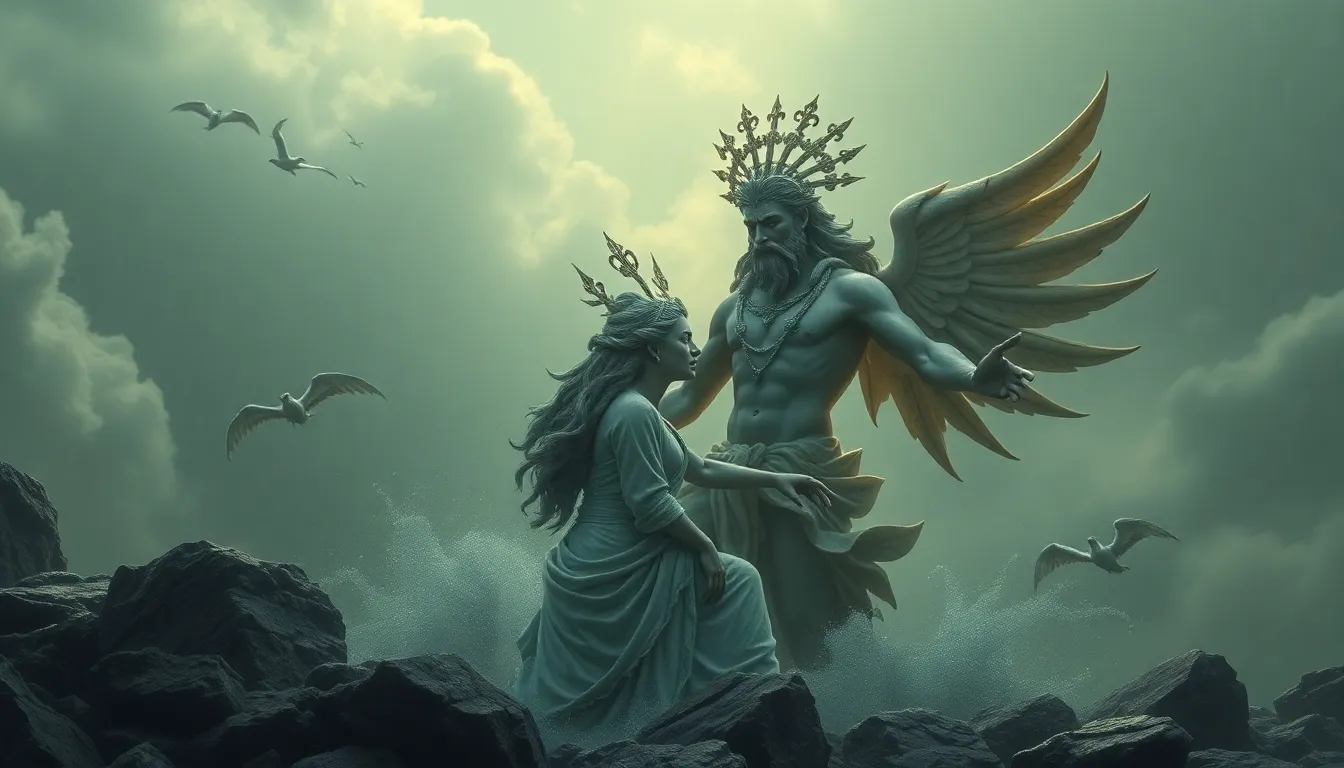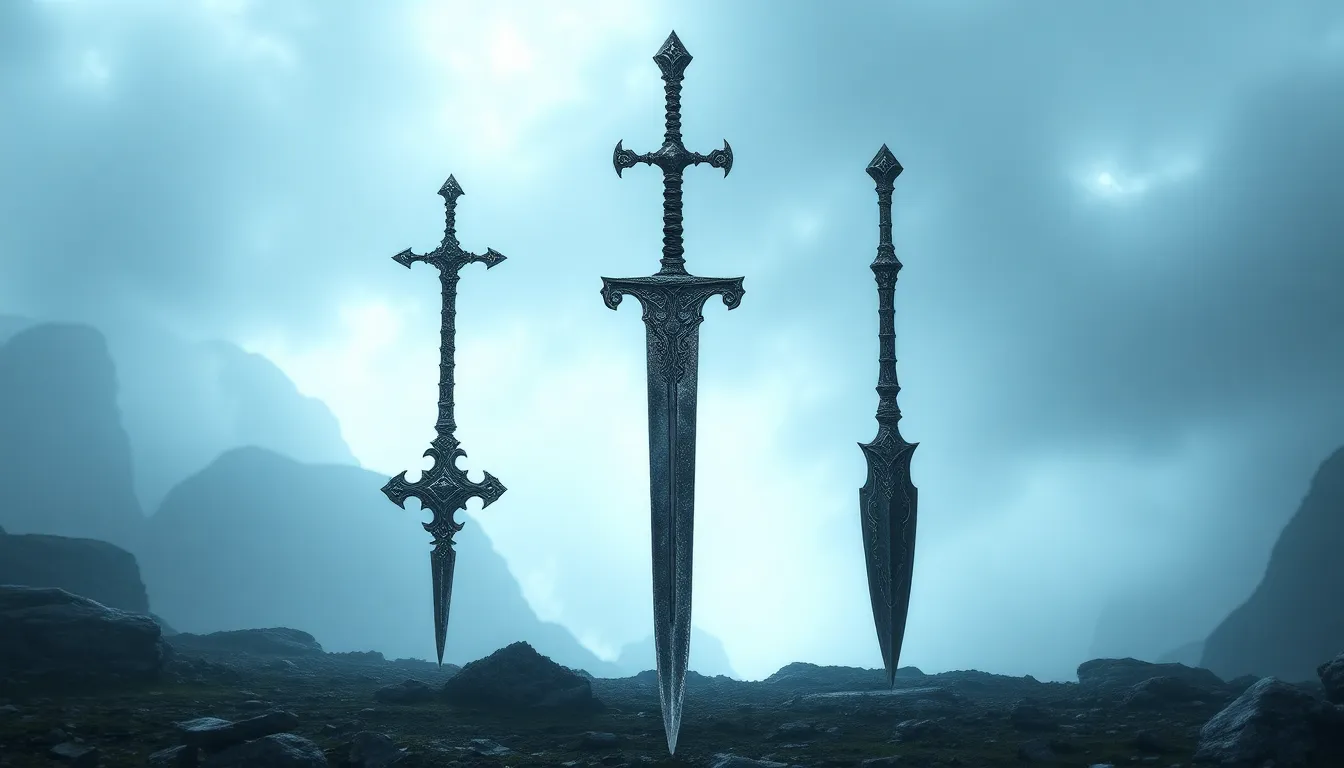The Most Tragic Tales of Ancient Deities: Love and Loss
Introduction: The Intersection of Divinity and Human Emotion
Throughout history, ancient deities have been portrayed as embodiments of human emotions, particularly love and loss. These mythological figures often reflect the complexities of human relationships, showcasing how love can lead to profound joy but also to devastating sorrow. The tales of these deities not only entertain but also provide insight into the values and beliefs of the cultures that created them. By examining these tragic stories, we can better understand the universal themes of love, sacrifice, and the human experience.
The Myth of Orpheus and Eurydice: Love Beyond Death
The story of Orpheus and Eurydice is one of the most poignant tales from ancient mythology. Orpheus, a gifted musician, fell deeply in love with Eurydice, but their happiness was short-lived as she tragically died from a snake bite. Devastated by her loss, Orpheus descended into the Underworld, determined to retrieve her. His music enchanted Hades, the god of the Underworld, who agreed to let Eurydice return to the living world on one condition: Orpheus must not look back at her until they reached the surface.
As they ascended, Orpheus, overwhelmed by love and doubt, glanced back, losing Eurydice forever. This myth embodies the themes of love, grief, and the consequences of disobedience. Orpheus symbolizes eternal love, his music echoing the depths of his sorrow and longing.
Isis and Osiris: A Tale of Betrayal and Resurrection
The myth of Isis and Osiris is central to Egyptian mythology and revolves around the themes of loyalty and betrayal. Osiris, the god of the afterlife, was murdered by his jealous brother Set. In her grief, Isis embarked on a perilous journey to find Osiris’s body. Through her devotion and magical powers, she successfully resurrected him, leading to the birth of their son, Horus.
This myth highlights the cycle of life and death, emphasizing the importance of love and loyalty in overcoming adversity. The story of Isis and Osiris had a profound impact on Egyptian culture, influencing their views on the afterlife and the rituals associated with death and resurrection.
Psyche and Eros: Trials of Love and Trust
The love story of Psyche and Eros showcases the trials and tribulations of love. Psyche, a mortal woman, was so beautiful that she garnered the envy of Venus, the goddess of love. In a bid to punish Psyche, Venus sent her son Eros to make her fall in love with a monster. However, Eros fell in love with Psyche instead, leading to a complex relationship filled with challenges.
Psyche faced numerous trials to prove her love and trust in Eros, including a journey to the Underworld. This tale explores themes of jealousy, trust, and the quest for self-discovery, highlighting how love often requires sacrifice and perseverance. Psyche’s eventual reunion with Eros symbolizes the triumph of love over adversity.
Daphne and Apollo: The Pain of Unrequited Love
The story of Daphne and Apollo is a tragic narrative of unrequited love. Apollo, the god of music and prophecy, fell deeply in love with the nymph Daphne. However, Daphne, desiring independence and freedom from romantic entanglements, fled from Apollo’s advances. In a desperate attempt to escape him, she prayed to her father, the river god Peneus, for help, leading to her transformation into a laurel tree.
This myth encapsulates the themes of desire, rejection, and transformation. Apollo’s sorrow and longing for Daphne emphasize the agony of unattainable love, while Daphne’s metamorphosis symbolizes the lengths one might go to protect their autonomy.
Hades and Persephone: The Duality of Life and Death
The abduction of Persephone by Hades is a foundational myth that explores the duality of life and death. Hades, the god of the Underworld, fell in love with Persephone and took her to his realm, causing her mother Demeter, the goddess of harvest, to grieve. Demeter’s sorrow led to the barrenness of the earth, illustrating the profound connection between love and the cycles of nature.
The themes of seasonal change, love, and sacrifice are intricately woven into this myth, as Persephone’s annual return to the surface symbolizes spring and renewal, while her descent into the Underworld represents autumn and winter. This narrative has significantly influenced agricultural practices and seasonal festivals in ancient cultures.
The Tragedy of Adonis: The Cycle of Life and Death
The myth of Adonis, a beautiful youth loved by Aphrodite, explores the transient nature of life and beauty. Adonis was tragically killed by a wild boar during a hunt, leading Aphrodite into deep mourning. Her tears became an emblem of love and loss, illustrating the connection between beauty and mortality.
This tale emphasizes themes of mortality and the cyclical nature of life and death. Adonis’s story resonated across various ancient societies, symbolizing the fleeting nature of beauty and the inevitability of death, while also celebrating the enduring power of love.
The Tale of Inanna and Dumuzid: Love and the Underworld
The Sumerian myth of Inanna and Dumuzid centers around Inanna’s descent into the Underworld, a journey that has profound implications for both love and the balance between life and death. Inanna, the goddess of love and war, descends to the Underworld to confront her sister Ereshkigal, the queen of the dead. This act of bravery results in her temporary death, leading to Dumuzid’s sacrifice in her place.
This myth explores themes of sacrifice, love, and the cyclical nature of life. Inanna’s journey reflects the belief in the necessity of death for the renewal of life, influencing Sumerian beliefs and rituals surrounding love, death, and rebirth.




